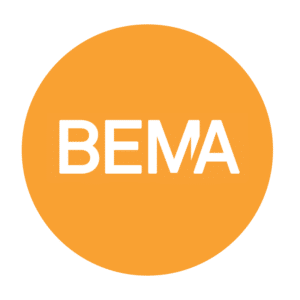18 Jul Workforce 2024: Knowledge Graphs: An Enabler of Supplier Discoverability and Enabling Digital Supply Chains
On Friday, June 28, professors Farhad Ameri and Binil Starly from Arizona State University (ASU) joined the Workforce Edition of BEMA Convention to offer members of the baking industry a glimpse into the powerful use of data within the supply chain.
Workforce Edition kicked off with a session on Knowledge Graphs from Farhad Ameri, an Associate Professor within the School of Manufacturing at ASU. This presentation took the audience back in time to learn about the birth of Artificial Intelligence (AI) in 1956 and the motivation to enable machines to think and act like humans. To accomplish this, information would need to be presented in a way that machines can understand – leading to the idea of Knowledge Representation and Reasoning (KRR).
Broad Scope
KRR is a subfield of AI that focuses on how to represent information in a form that a computer system can use to solve complex tasks and apply logical reasoning to draw conclusions from the information. With the invention of the internet, graph representation became a way to mimic human knowledge and to infer new facts with the intersection of AI and the internet.
Then came the idea of the Semantic Web in 2001, an extension of the current web in which information is given well-defined meaning. This offers a way to collect and add new facts to create a web of resources to present information. While the idea of the semantic web was never fully realized, it did inspire Google, Facebook and Amazon to develop their own graphs.
Complicated Network
Knowledge graphs are also known as a semantic network, a network of real-world entities made up of objects, events, people and situations and the relationships between them. Entities such as Microsoft, Google, Facebook, eBay and IBM have all developed their own proprietary databases. The amount of information continues to expand but challenges arise when it comes to data integrity.
Question: could this concept be applied to the supply chain of other entities? The global supply chain involves multiple partners, each likely using different systems and data formats. This leads to challenges in integrating and exchanging information seamlessly. Other challenges include visibility and traceability in real-time and a lack of accuracy and interoperability for manufacturers.
Future Outlooks
Semantic networks and knowledge graphics hold promise when it comes to improving and streamlining the supply chain, but this must start with a goal to enhance transparency and usability. Real-time intelligence, enhanced collaboration and communication between data and humans is also critical in creating and maintaining these graphs and network.
The Supply and Demand Open Knowledge Network (SUDOKN) has begun an impactful initiative of using knowledge graphs to represent the capabilities of U.S. Manufacturing. The goal of SUDOKN is to develop a nationwide Manufacturing Capability Network with a knowledge graph for every manufacturer in the U.S. The work includes the use of web scraping and ChatGPT to export the info of 20,000 manufacturers. To date, supplier discovery is lengthy, and the process is resource intensive. Another project, Agri Food Traceability, looks at creating the ability to trace and track a food product through specified stages of production. End-to-end traceability involves many steps, and each step generates data. Moving forward, the initiative will require an integrated body of information – and knowledge graphics could help.





No Comments